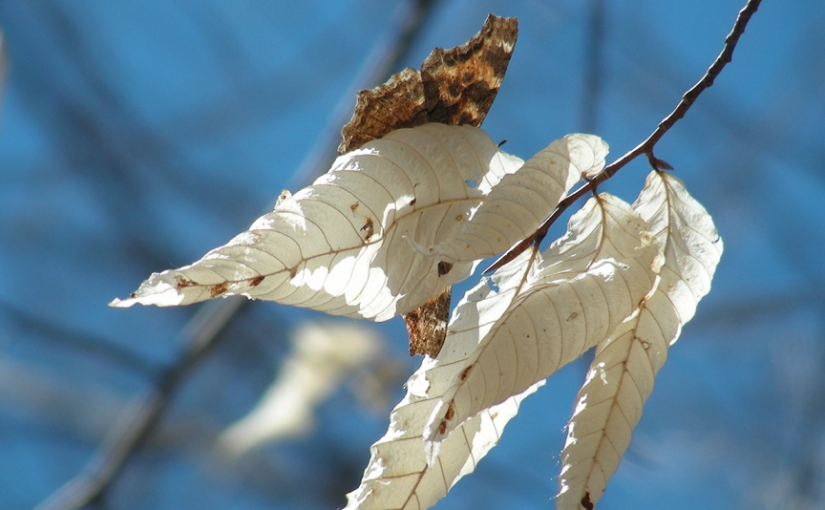Today’s post comes to us from the Discovery staff at Charleston Lake Provincial Park.
Spring is coming!
Some telltale signs of spring include the return of birds that left for the winter, spring wildflowers opening their colourful blooms, and new tree leaves unfurling from buds.
But before that, there’s often an earlier sign of spring: butterflies.
That’s right, butterflies! A sign of spring in Charleston Lake is the sight of some early winged beauties flitting about.
Not so fragile!
Many butterfly species spend the cold, snowy months as caterpillars, whiles others pass the winter in the egg or chrysalis stages.
Some species migrate south as adults, for which Monarchs are well-known.
While Monarchs receive much attention, equally incredible are some hardy species that survive the winter in Ontario as delicate adult butterflies (although in a state of dormancy).
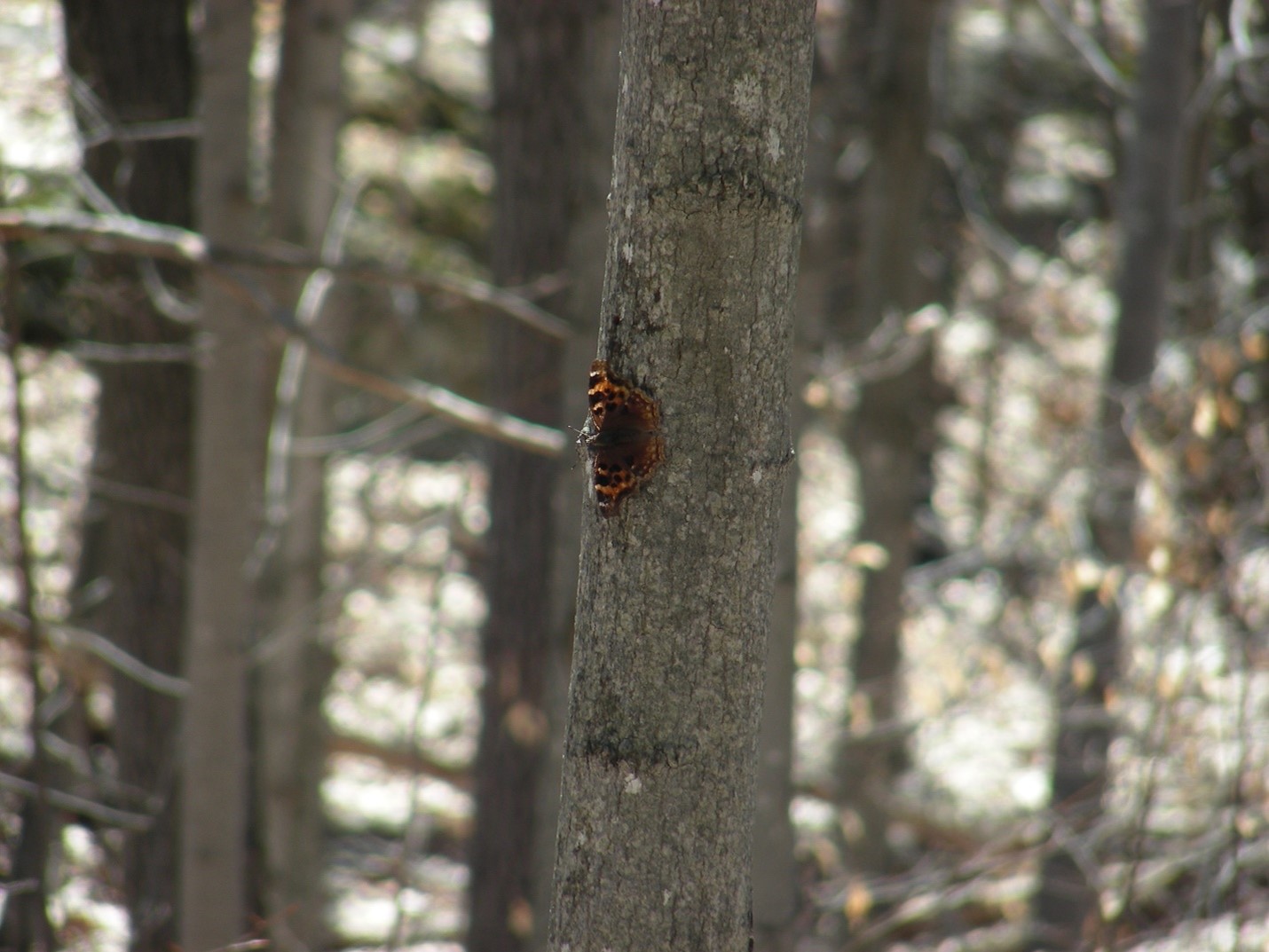
Some of these hardy insects can be seen flying in the park in early April and even in late March in some years (while there still could be patches of snow on the ground) if temperatures reach above 10°C.
These “cold-blooded” (ectothermic) insects can be seen flitting about the park, even long before many of the “warm-blooded” birds have migrated back.
How do they do it?
Many butterflies are attracted to flowers to feed on their sweet nectar, but few flowers bloom in very early spring.
Not a problem for our hearty early-flying butterflies!
The Mourning Cloak, Compton Tortoiseshell, Eastern Comma, and a few other types of butterflies are typically more attracted to animal dung, rotting fruit, carrion (dead carcasses), and tree sap flows. They may also feed on liquids from wet soil where animals have urinated.
This means they can be active and fly about in early spring before flowers are available.
Some, like the Mourning Cloak and Compton Tortoiseshell, frequent the drill holes on trees (tree “sap wells”) created by a unique woodpecker, the aptly named Yellow-bellied Sapsucker.
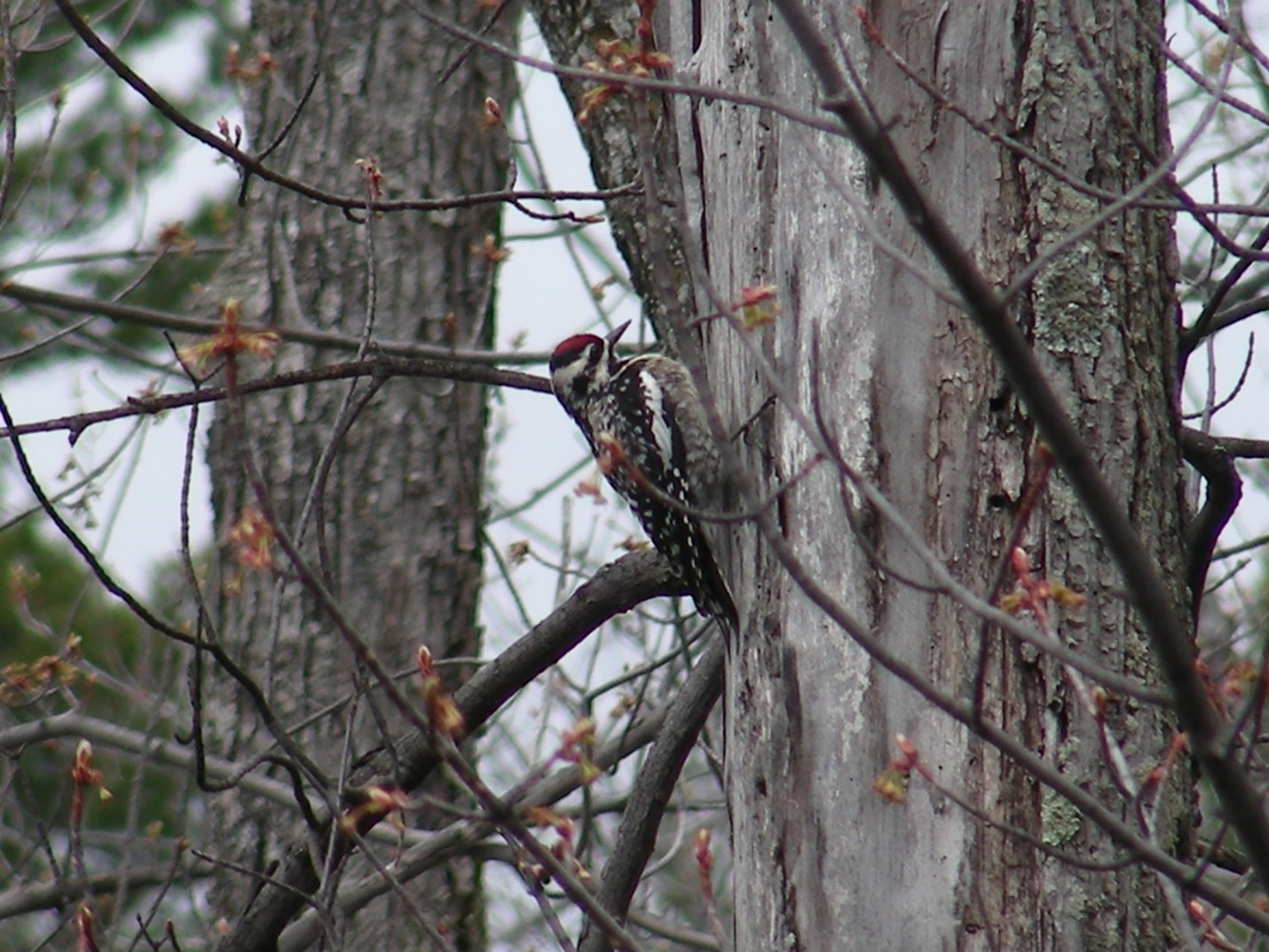
The sapsuckers drill holes causing the sap to flow out of these trees to feed on the sap and the small insects attracted to the sap. The Yellow-bellied Sapsuckers typically migrate back to the park in early April.
Wings for warming
Butterflies face significant challenges in early spring, with precarious weather conditions and likely some colder days.
To be able to fly around, “cold-blooded” butterflies need to warm up their flight muscles to be able to fly.
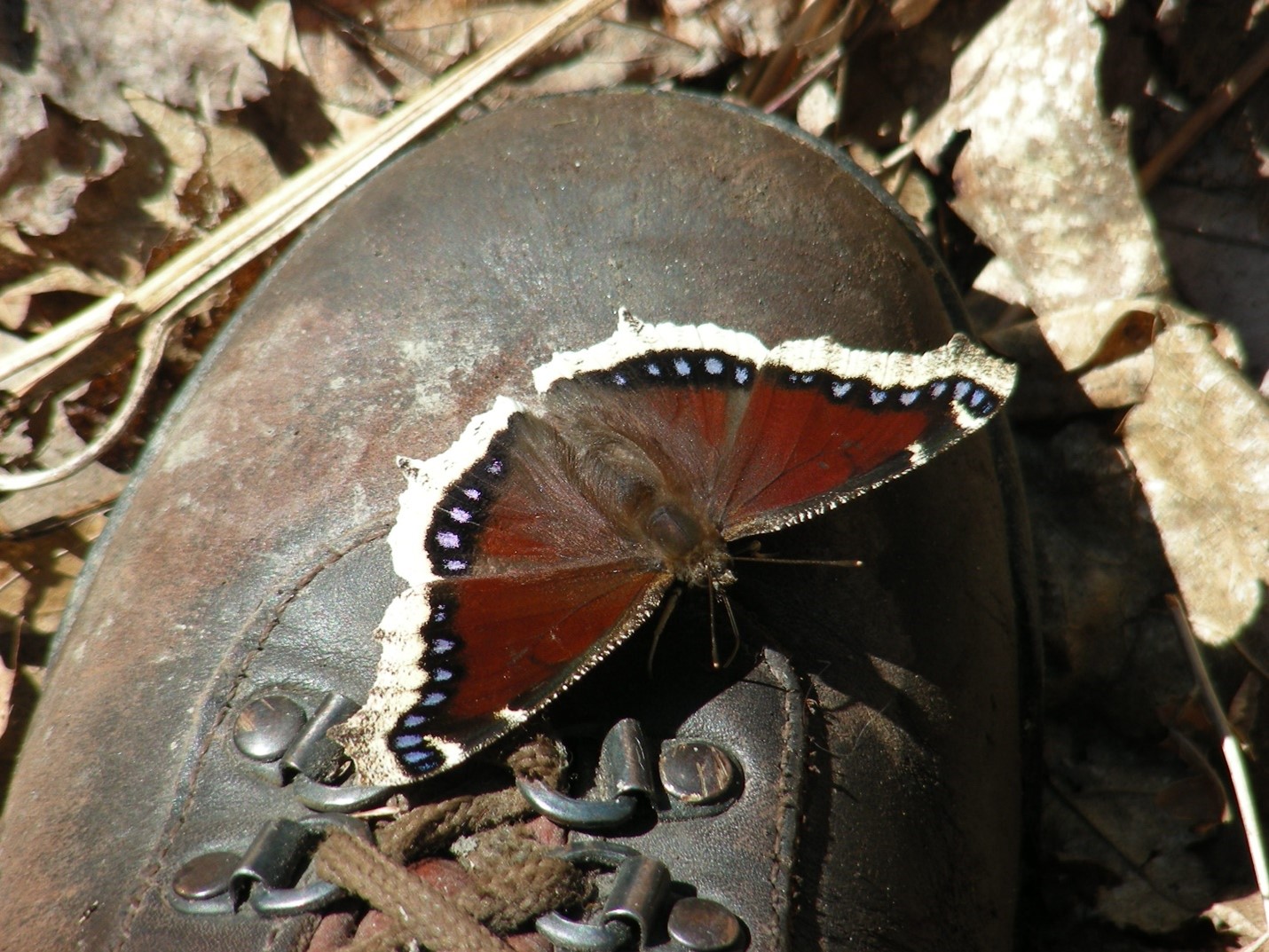
The Mourning Cloak has some interesting ways of warming up:
- shivering, which warms its body as much as 8-10°C
- absorbing heat from the ground (which is warmer than the air above)
- having long body hairs that trap in heat like a layer of insulation
- basking by opening its wings to absorb the sun’s rays. Its dark-coloured wings readily absorb the sun’s heat and can quickly raise the temperature of the base of its wings to 45°C
That’s how Mourning Cloaks are able to fly: by taking advantage of periods of warmer weather. On days with cooler temperatures, they won’t be active or flying.
Seasonal colours
The butterflies we see in the early spring emerge as adult butterflies the previous summer.
For example, the Eastern Comma has two generations of adults in a year, each looking a little different. There’s the darker “summer form” (flying from about June to July) and the paler “over-wintering form” (seen in later summer and into the fall).
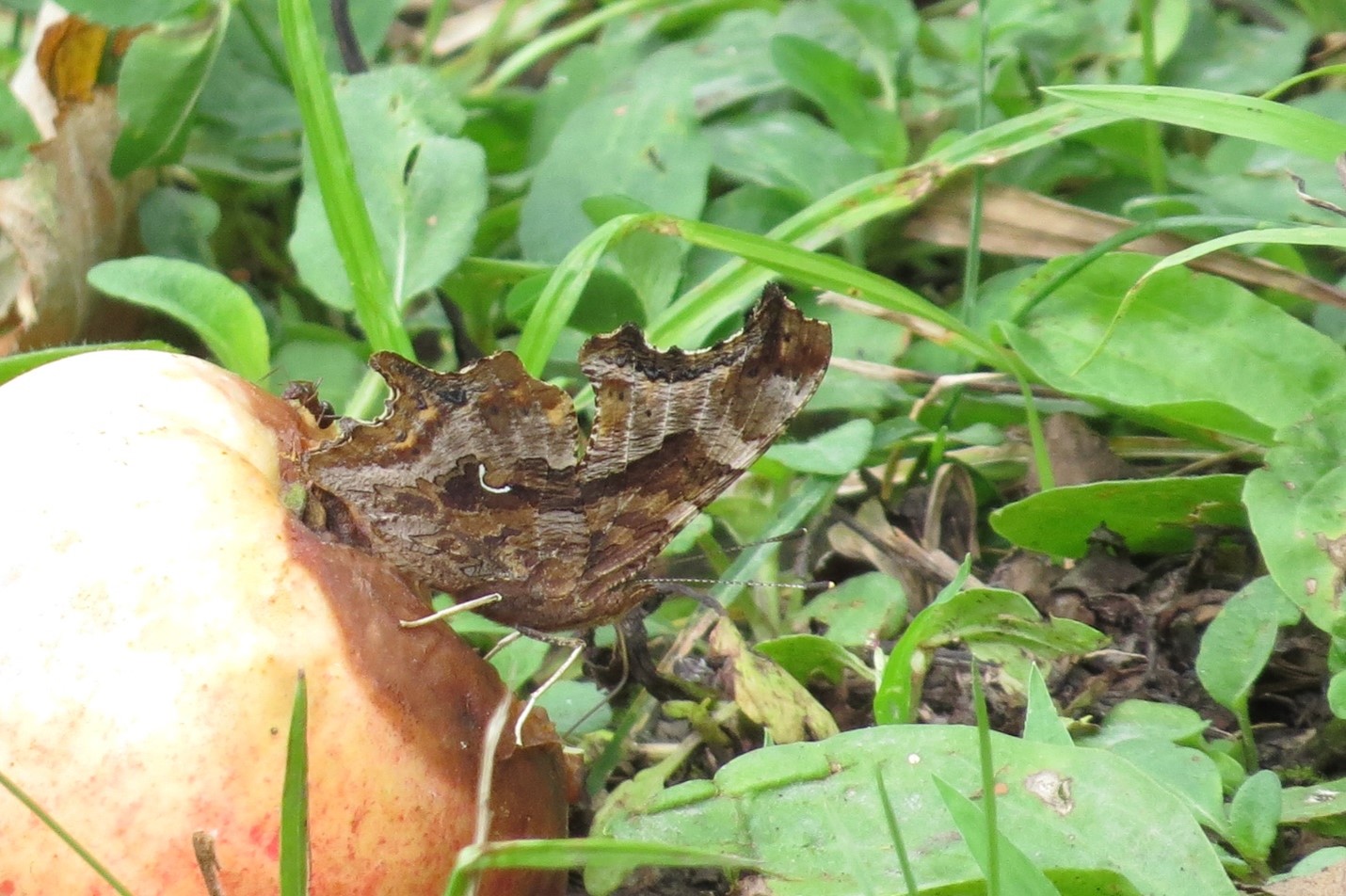
The day length that the butterfly experiences as a caterpillar is what determines the over-wintering or summer forms.
The paler (over-wintering) Eastern Commas are some of the last butterflies seen in the fall, before they hit the “pause button” and hibernate as an adult over the winter, and then become active again in the early spring.
Long living
The adult Mourning Cloaks seen in early spring first emerge as an adult butterfly the previous July.
In most cases, they’re the same individuals laying eggs in May the following spring. That means their adult lifespan is a remarkable 10-11 months! That’s a longer lifespan than the Monarchs that migrate south to Mexico for the winter.
This makes them one of the longest-lived butterflies in the park — pretty impressive!
Keep an eye out!
In early spring when you’re getting antsy for the warm weather, be on the lookout for some of our remarkable early spring butterflies.
Despite the early calendar date, their flitting about is a welcome surprise, indicating spring has arrived!
